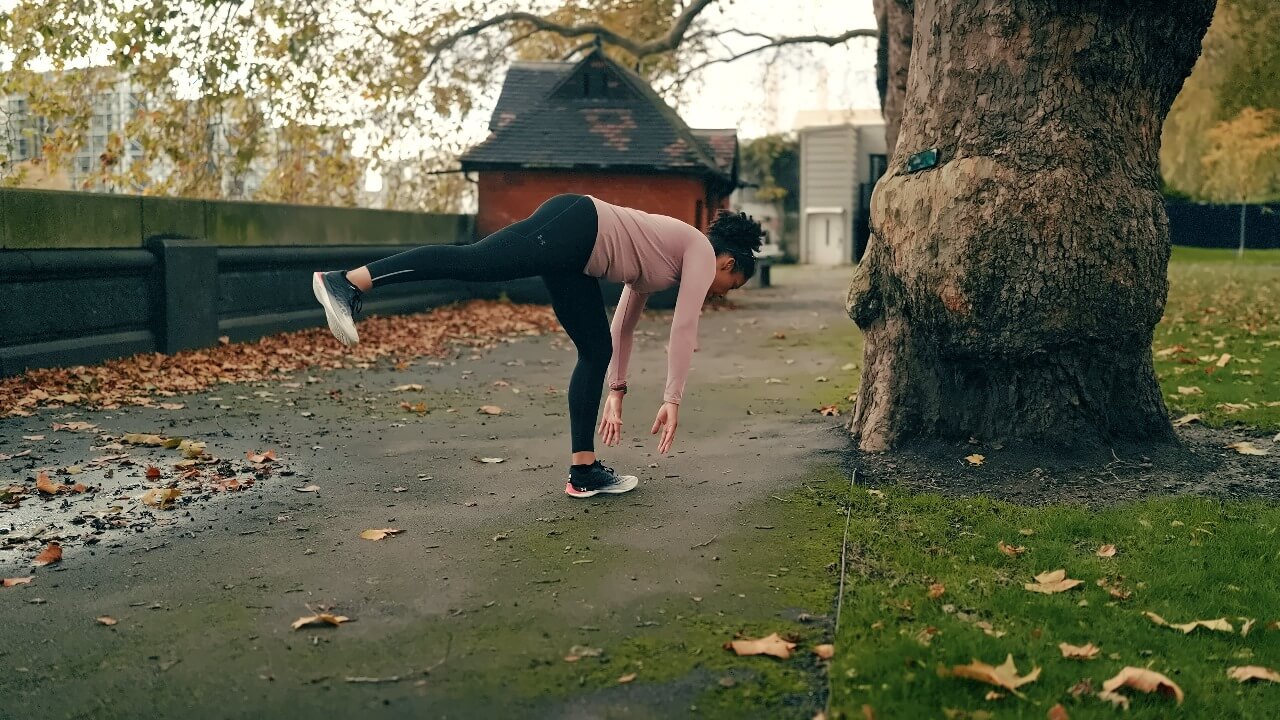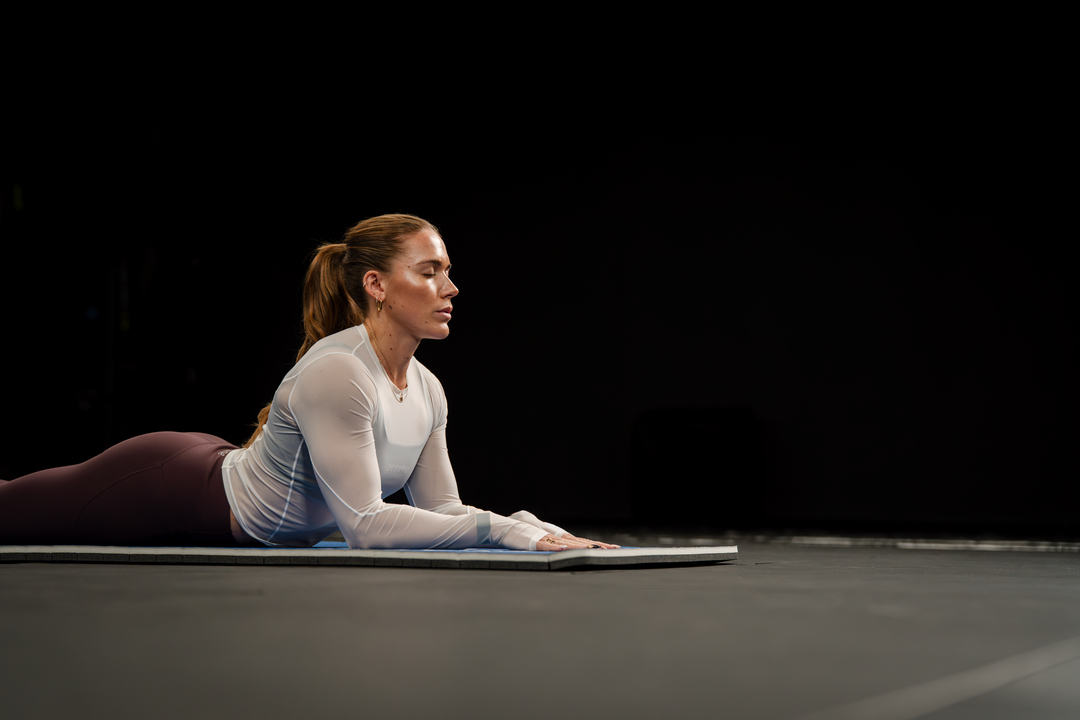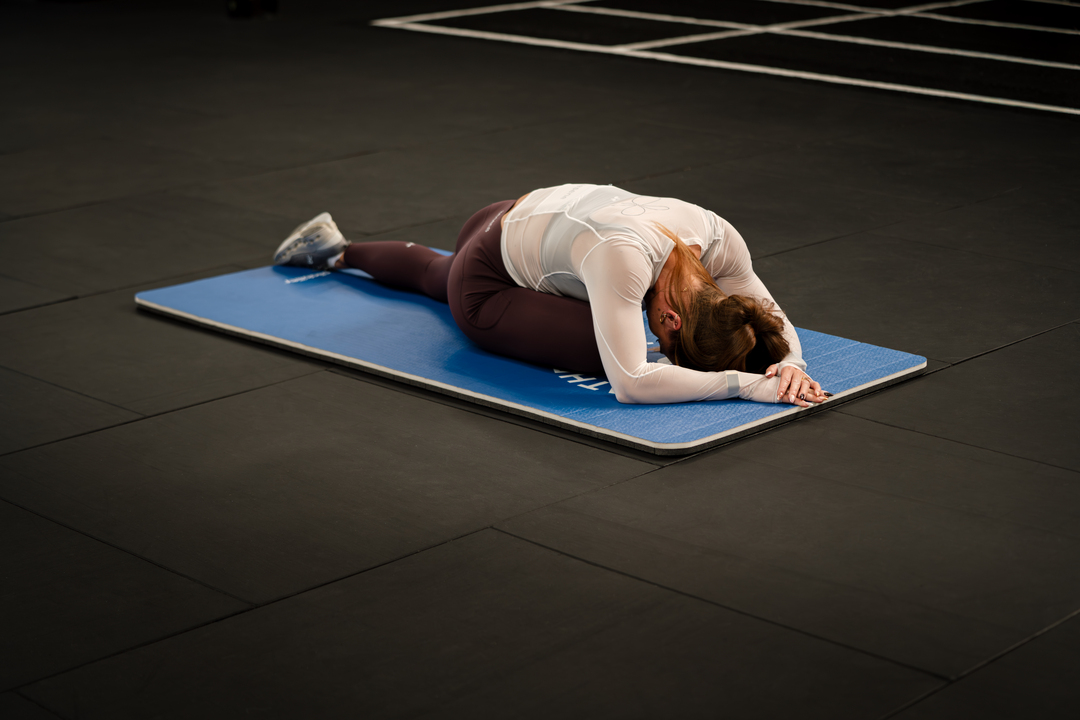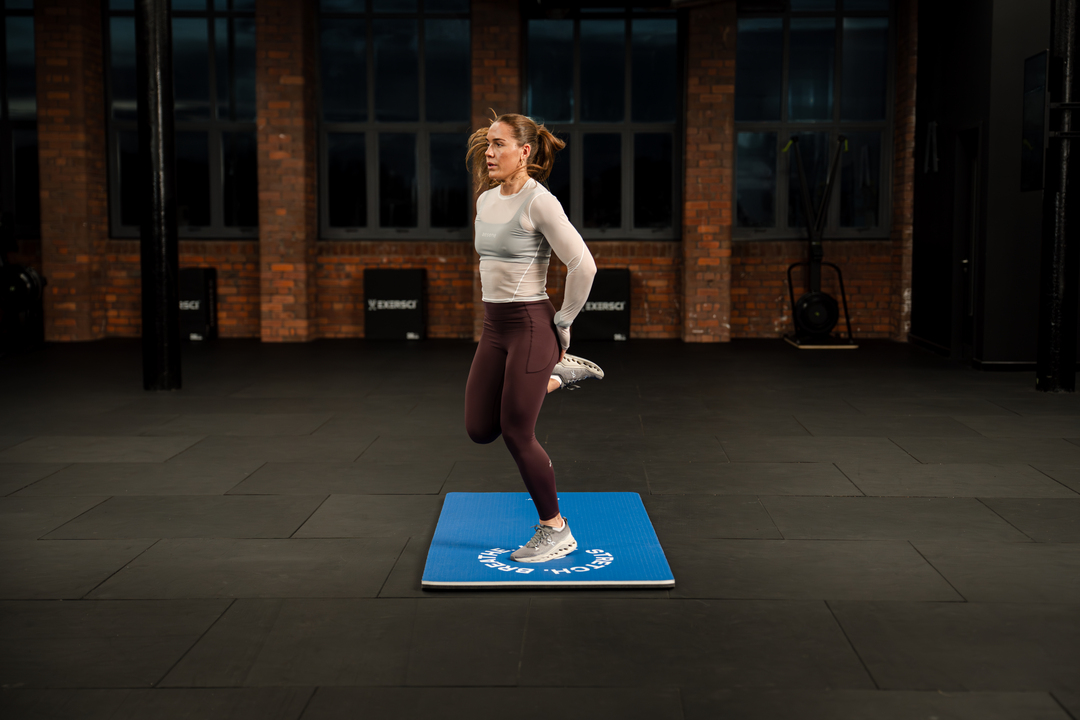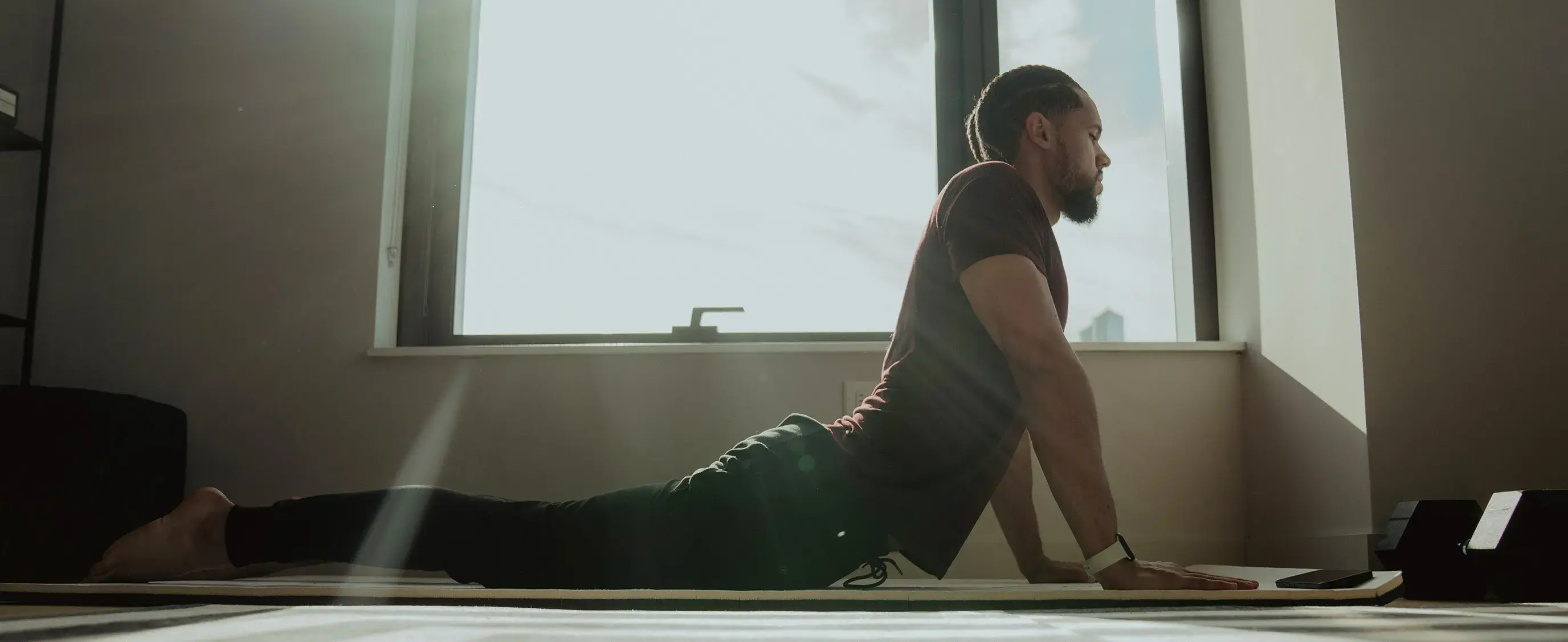Athletic performance can often feel like a race against time. With age, we all become slower, weaker, and less agile. These changes can take the fun out of sports. What's worse, these natural declines can increase injury risk and, eventually, force us to hang up our cleats for good. Learning to increase athleticism can help you avoid these scenarios, so you can continue to play the sports you love and perform at a high level for years. In this article, we'll cover how to increase athleticism to help you become stronger, faster, and more agile, while sustaining peak physical performance and preventing decline over time.
One way to achieve these goals is with Pliability's mobility app. Our program is designed to help you warm up, recover, and improve your mobility. With regular use, you’ll improve your athleticism and reduce your risk of injury so you can stay in the game longer.
What is Athleticism and Its Core Components
.jpeg)
On any given day, you can log into your daily feed on Twitter and scroll through a plethora of verbal grudge matches between:
- Strength coaches
- Pitching/hitting coaches
- Movement gurus, arguing
They argue and criticize each other’s ideology about athletic performance and how to improve it. These verbal assaults are usually fueled by the fact that one individual’s concept, theory, protocol, or whatever you choose to call it, may not line up with another’s.
Unless It’s Movement Based, It’s Not that Athletic
Some believe that training like an athlete means squatting instead of the leg press. While it is agreeable that those seeking enhanced athleticism should steer clear of machine training, performing a squat is nothing exceptionally athletic. It’s the first significant movement pattern you mastered as an infant.
Since then, you’ve probably screwed it up a bit and may not be able to do it as well, but there is nothing athletic about:
- Taking two steps back
- Squatting down
Compound Movements
It’s commonly performed millions of times per day in crappers worldwide. It’s a great exercise that does more for you and incorporates more muscle groups. It requires more hip and ankle mobility, core strength, and stability than any machine.
Don’t think you will magically become Jerry Rice just because you put a bar on your back instead of lying on the hack squat machine. Exercises like the handstand pushup, overhead squat, and one-arm row all enhance your ability to perform athletically (provided you don’t do anything stupid or injure yourself).
Dynamic Movement
These are all exercises where you remain in a stationary position. To improve or maintain your athleticism, you have to move. It’s as simple as that. No matter how functional an exercise may be, a huge component is still missing if you remain stationary when performing it.
The 10 Components of Complete Athleticism
- Strength: The ability to create force.
- Speed: The ability to minimize the time cycle of a given movement.
- Power: The ability to create maximal force in minimal time.
- Aerobic Capacity: The maximal amount of physiological work an individual can do as measured by oxygen consumption.
- Anaerobic Capacity: The maximal work performed during maximum-intensity short-term physical effort.
- Balance & Coordination: The ability to perform movements with precision and grace.
- Agility: The ability to be nimble on your feet and move quickly from one movement pattern to another.
- Stability: The ability to prevent movement in one part of the body while creating movement in another, thus protecting vulnerable areas.
- Mobility: Flexibility in motion, the range of motion through muscles and joints.
- Recovery: Recovery is the ability to recover or bounce back, restoring physiological and psychological processes.
Related Reading
- Benefits of Sports Massage
- How to Improve Athletic Performance
- Sports Performance Analysis
- Athletic Performance Testing
- How Long Does Alcohol Affect Athletic Performance
- How Does Iron Deficiency Affect Athletic Performance?
How to Increase Athleticism
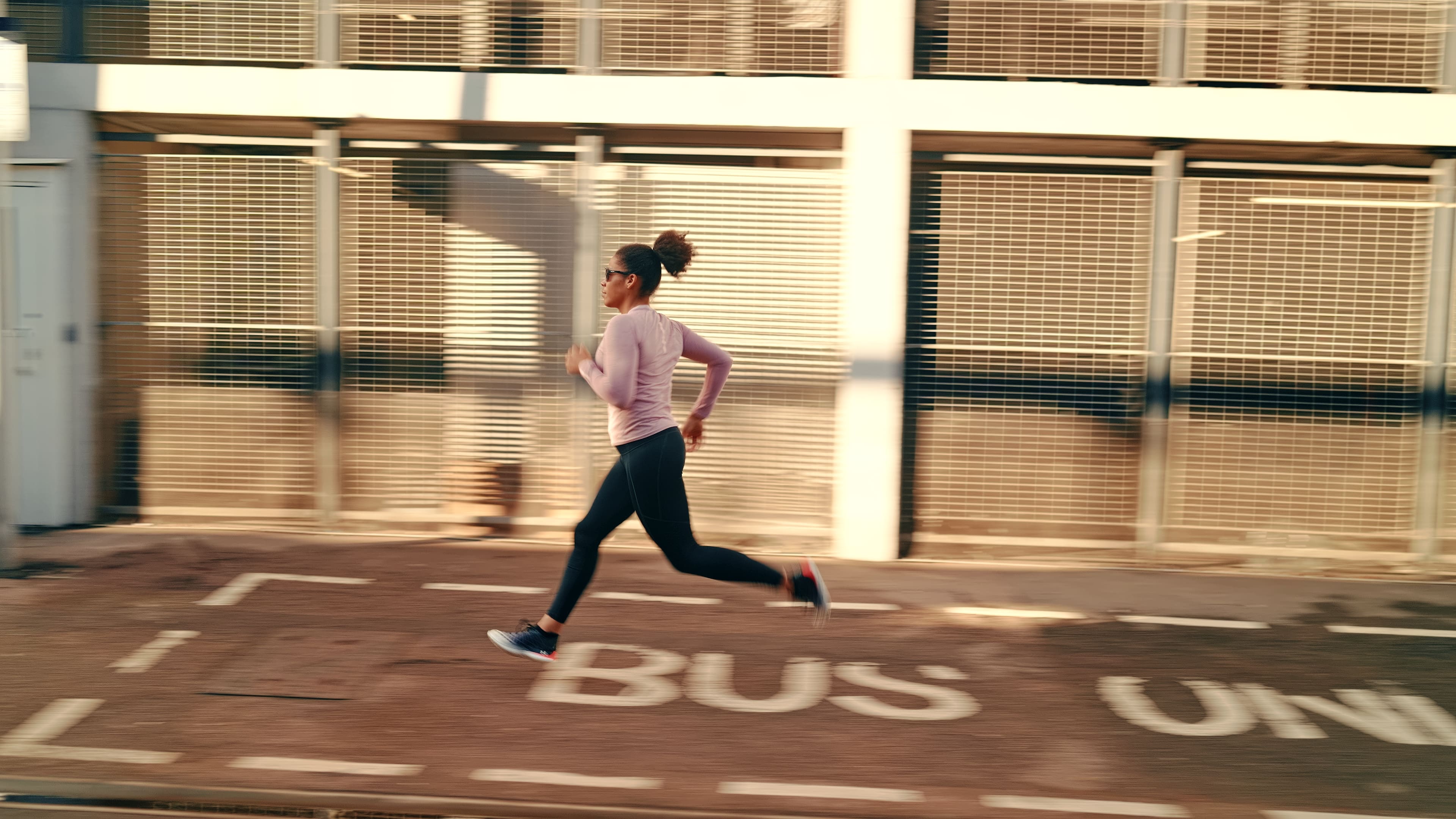
Up Your Mobility Game
Improving your athleticism starts with increasing your mobility. Before you become a speeding bullet, you must ensure your joints are stable and mobile. If you’re tight and locked up, your muscles will be restricted, and they won’t work to the best of their ability. It’s like driving with the emergency brake on.
Stable and mobile joints will help you perform better and reduce your risk of injury. Start every workout with a good warm-up. These exercises, known as ‘fillers,’ can also be included in rest periods and downtime. Do enough to get yourself in the proper position to perform the exercise safely.
Mobility Work
If you have a super tight back and hips from sitting at work all day, you will need a bit more to get into good positions. You don’t need to become a yogi here. Don’t lose sight of your actual goal, and that’s to become more athletic. Your warm-up will depend on your restrictions and what you will be training.
A great example is how to move like a ninja. This is known as a flow. It combines a few simple exercises that help most people unlock super-tight areas.
Effective Warm-up
You can even start by jumping rope, jogging, performing mobility drills, performing bodyweight movements, or wearing extra layers of clothes, then move on to some other basic warm-up exercises, like the ones in the sample workout at the end of this article.
Do something for 5-10 minutes that will increase your body temperature and prepare your muscles and joints for working out. Then, rehearse the main movement you are about to do for a few minutes to practice it. Now, you are ready for the next step.
Up Your Strength
The next puzzle piece is using your newly found range of motion to build a solid strength base. This means compound exercises with heavy weights that will:
- Challenge you
- Ensure your form is perfect
Before you go swinging weights around and dive-bombing into the bottom of a squat, keep reading. A good strength base is like a solid foundation of a house. It might look good on the outside, but you won’t last long without it. Think of your strength as a glass. Inside that glass, we have water, which represents your athleticism. As a general rule, the greater the base of strength, the greater the potential to increase your athleticism.
Single-Leg Focus
Bigger glass = more significant potential for more water. There comes a point where you can be close to your strength potential and will see better gains by improving other characteristics, like:
- Power production
- Reaction time
How do you get strong and athletic? You are better off focusing on getting strong in single-leg exercises and using bilateral (two-legged) variations to supplement. There are a few reasons for this; the two main ones are that most sports and athletic events include a flight phase where you will spend most of your time on one leg, so it makes sense to train that way.
Reduced Stress
Single-leg exercises limit the amount of external load you can use, which will reduce the overall:
- Stress
- Recover
That way, you can focus on getting strong, powerful, and better at whatever activity you want to improve. Here are a few exercises:
- Heavy sled pushes and drags
- Bulgarian split squats
- B-stance variations
- Single-leg deadlift variations
- Hip thrust variations
- Goblet squats
- Hex bar deadlifts
Exercise Selection
Pick 1-3 of these exercises and perform them for 3-4 sets each in the 5-10 rep range, and you will quickly increase your athleticism.
Up Your Power
Power is a product of strength and speed, so it’s how fast you can do something. That is why developing a solid strength base is essential before getting to this point. Power is defined as the rate of force development. The scientific equation for power is P=F X V, where: P= power, F= force, V= velocity or speed.
When training to become more athletic, you need to increase your ability to produce power. This means we have to get stronger and faster. When training for power, it’s essential to perform these exercises fast, hard, and angry, but under control. I call it ‘training with bad intentions.’ If you are familiar with boxing, just look at Mike Tyson.
Explosive Power
He is a perfect example of someone who could move well, was strong, and threw every punch with bad intentions. This simple tweak in how you perform an exercise can be the difference between strength and power exercises.
There is a big difference between box squatting with chains and trying to move the bar as fast as you possibly can versus performing the same movement with a slower tempo and going into cruise control at the point of the movement when it becomes easier. Here are a few power exercises:
- Sprints
- Sled Sprints
- Dynamic Effort Squats
- Bench Presses against bands or chains
- Jump variations
- Heavy or Band Resisted Kettlebell Swings
- Medicine ball throws (watch this video)
- Push Press to overhead toss from chest
- Vertical jump to overhead toss from chest
- Kneeling jump to overhead toss from chest
- Kneeling jump to overhead scoop toss
Prioritize Power
When incorporating power exercises, fully recover between your sets, typically 90 seconds to 3 minutes. You don’t want to perform these exercises in a fatigued state. Power exercises should be done early in your workouts when you are fresh and can put all your effort into them, before your strength work. Why didn’t I make these second, then?
You have to develop a strong base before becoming powerful and more athletic. Pick 1-3 of these exercises and perform them for 3-6 sets in the 3-6 rep range. Exercises like banded kettlebell swings are typically done for sets of 6-12. Some say, “why should athletes learn weightlifting if they aren’t weight lifters?”
Weightlifting Benefits
That’s like saying, “why should athletes learn proper running mechanics if they aren’t track athletes?” See how silly it sounds when you apply it to running? Weightlifting is simply another tool (a very effective tool) to improve athletic performance, just as proper running mechanics are.
A well-structured strength and conditioning program will have different components. A powerful athlete is both strong AND fast. Don’t get left in the dust.
Lose Body Fat to Boost Your Performance
A leaner you can probably move faster than a “fluffier” you. Many athletes feel “lighter” and faster after dropping pounds. This will depend on the sport you play and your position. Being heavier is essential for some sports and positions (being a football lineman).
This is no excuse to let yourself go. If you fit into a particular weight class, keep your weight up, too. On the flip side, if you’re a weight class athlete and generally weigh near the bottom of your weight class, you might want to consider attending the class below (if it can be done safely with enough time between competitions).
Lean Muscle
This may allow you to be larger than most of the opponents you face in your class, giving you an advantage. Of course, getting lean will help to a point. If your weight is going down, but you are also losing an appreciable amount of muscle mass as determined by a BioSignature, you should re-evaluate your actions.
Muscles are what move weight, not fat, and maintaining as much muscle as you can as an athlete is often essential. How do you get leaner? A proper overall diet suited to the individual and a good training program to match.
Put 100% Effort into What You Do
Every single thing on this list can be controlled with effort. You can put as much effort into getting stronger, practicing the skills needed in your sport, dialling in your nutrition and training to get lean, and training in a full range of motion.
Some people claim that their genetics limit them. This is true in some areas, but genetics doesn’t limit how much effort you can put into applying the other components on this list. The best athletes I know have a relentless work ethic.
Mobility Focus
Pliability offers a fresh take on yoga, tailored for performance-oriented individuals and athletes. Our app features a vast library of high-quality videos designed to:
- Improve flexibility
- Aid recovery
- Reduce pain
- Enhance range of motion
Pliability provides daily-updated custom mobility programs for those interested in optimizing their:
- Health
- Fitness
Body Scanning
It also includes a unique body-scanning feature to pinpoint mobility issues. If you're feeling limited by pain or ability to move, Pliability aims to complement your fitness routine and help you move better.
Sign up today for 7 days free on iPhone, iPad, Android, or our website to improve flexibility, aid recovery, reduce pain, and enhance range of motion with our mobility app.
Related Reading
- Adaptogen Benefits for Athletes
- Athletic Performance Counseling
- How to Improve Running
- How to Get Faster at Sprinting
- How to Run a Faster Marathon
- How to Increase Stamina for Running
- How to Improve Agility
6 Ways to Maintain or Improve Your Athleticism

1. Conduct a 60-Second Body Test
Before figuring out how to become more athletic, it’s crucial to understand what’s currently limiting your athleticism. A quick body test will help you identify areas for improvement and tailor your training accordingly. You can focus on doing each activity for 60 seconds and recording how it went for you on a 1-10 scale.
One being easy and 10 being impossible. Print off and fill in this chart to explore where you are starting on your athletic journey, and retest this after a few weeks of training to see if you are improving. You can add anything into your test that falls under your definition of athletic.
Exercise:
Time
How Many Were You Able To Complete?
1 - 10 ranking
Did you feel any pain or discomfort? If so, what and where?
Jump Rope
60 seconds
Box Hop
60 seconds
Air Squats
60 seconds
Light Jog
60 seconds
Sprints
6 x 10 seconds
Balance on only the right leg
60 seconds
Balance on only the left leg
60 seconds
Quick Tip: Keep a detailed performance record in each test to track your progress and adjust your training as needed. You will use this for your training plan.
2. Acknowledging, Managing, and Erasing Pain
You get more out of a year of consistent, pain-free training than you do lifting heavy in the gym. Time compounds, and building a solid foundation will lead to lasting progress. Understanding and acknowledging pain is a crucial part of enhancing your athleticism. Here’s how to effectively address and manage pain during your training:
- Track Aches and Pains: Note where you feel different aches and pains during each exercise. Use a scale of 1-10 to rate the intensity of each discomfort, with one being minimal and 10 being severe. It is ideal if your pain decreases as your training cycle continues. More pain is not more gain when it comes to being athletic.
- Identify Patterns: Look for patterns in your pain reports. Are certain exercises causing more discomfort? Are there specific movements or positions that exacerbate the pain?
- Incorporate Recovery Techniques: Use foam rolling, massage, heat and cold therapy, and stretching to address areas of discomfort and promote recovery. Test what types of recovery techniques are working best for you. Some people recover better with heat, while others do better with cold; your body is unique.
- Therapeutic Self-Massage During Activity: Learn self-massage techniques to alleviate muscle tension and improve circulation during rest periods between physical activity. Tools like massage balls, foam rollers, and your hands can help target specific areas of discomfort.
- Learn Body Care: Understanding how to care for your body is essential. Educate yourself about proper body mechanics, recovery strategies, and how to prevent common injuries.
- Stay Hydrated and Nourished: Proper hydration and nutrition can help manage and reduce muscle soreness and fatigue, and decrease the risk of injuries.
- Consult a Professional: If you notice persistent or severe pain, seek advice from a healthcare professional or physical therapist to address potential issues and get personalized treatment.
Quick Tip
A pain journal will help you manage discomfort more effectively and make informed decisions about your training adjustments. As shown above, you can combine your pain journal with your physical activity.
3. Create a Structured Training Plan
Here is the central part that can often be confusing. Creating the training plan. This athletic approach involves planning your training in phases, usually four-week blocks, each with specific goals and focuses, to:
- Ensure progressive improvement
- Prevent burnout
Each phase builds on the previous one, creating a solid foundation for athleticism to build. But how do you start making a training plan? Here’s how to start structuring it:
Prep Phase
around 15 training sessions
Focus on building a solid foundation with general strength and conditioning.
Strength Phase
around 9 training sessions
Emphasize heavy lifting and muscle building.
Power Phase
around 9 training sessions
Integrate plyometrics and explosive movements.
Performance Phase
around 9-11 training sessions
Refine skills and peak your performance with sport-specific drills or advanced techniques.
- Assess Your Current Fitness Level: Evaluate your strengths and weaknesses from your body test. Use this information to tailor your training phases. This is what we did is the 1st step.
- Recovery: Working in a full recovery week every 4th week will help you stay on track while limiting injuries. Your body needs to rest when reaching for athleticism.
- Set Specific Goals: Define your goal in each training phase. For example, you might focus on strength in one phase, speed in another, and endurance in a third. This can be very specific.
- Adjust as Needed: Review your progress regularly and adjust your plan based on how your body responds and any changes in your goals.
Quick Tip: A structured training plan helps manage training loads and optimize performance. A well-organized plan keeps you on track and ensures continuous improvement.
4. Make Every Movement Count
Athletic means that every movement you perform, whether in sports or daily life, becomes more efficient and effective.
Here’s how enhancing your athleticism translates into improved performance and ease in various activities:
- Sport-Specific Benefits: For athletes, developing strength, agility, and coordination directly translates into better performance in their sport. Enhanced physical abilities make complex movements feel more natural and less exhausting.
- Skill Development: Focus on refining skills specific to your sport or activities. For example, if you’re a soccer player, work on dribbling, passing, and shooting techniques if you’re into everyday fitness, practice squats and lunges to improve functional strength.
- Everyday Life Enhancements: If you're not involved in competitive sports, becoming more athletic still has significant benefits. Improved strength and flexibility make daily tasks like lifting groceries or climbing stairs easier and less tiring.
- Functional Training: Focus on exercises that mimic everyday movements or the specific demands of your sport. This functional approach ensures that your training translates effectively into real-world activities.
- Skill Specifics: Pay attention to the specific skills related to your activities or sports. For instance, if you're training for basketball, incorporate shooting drills, agility drills, and core strengthening exercises to improve your overall performance.
Quick Tip: Apply athletic principles to all your physical activities. Whether playing a sport or simply going about your daily routine, the more functional and efficient your movements, the easier and more enjoyable they become.
5. Consistency and Patience
Consistency and patience with a focused approach are the magic formula. The promise is that you will not be good when you start, but can continually improve. Athleticism grows from the consistent repetition of movements and skills. As these patterns become second nature, you’ll find that your dedication has transformed you into someone others perceive as naturally athletic.
- Consistency: Consistent effort is one of the most critical factors in improving athleticism. Regular training, proper nutrition, and adequate rest are all essential.
- Patience: Athletic improvement takes time. Stay committed to your training plan and understand that progress will come with sustained effort.
Quick Tip: Set small, achievable milestones to maintain motivation and track your progress over time.
6. Genetic Factors and Training
Genetics undeniably influence certain aspects of athletic potential, such as:
- Muscle fiber type
- Natural strength
- Endurance levels
Still, exposure has much to do with where you are today, too. While you may not have the ideal genetic profile for a specific sport, dedicated training can help you overcome these natural predispositions and give yourself new exposure.
- Understanding Genetics: Understand what you are naturally good at and be open to discovering it. Everyone has something they are great at. For you,, it's the mental ability to understand how something works. For another, it might be jumping over a hurdle. No matter what, use your genetic gifts and then develop the rest.
- Environmental Influences: Consider how your upbringing and daily activities have shaped your physical abilities. Walking to school, playing outside as a child, or engaging in manual labor can influence your athleticism and movement skills. If you work a desk job and sit for 8+ hours a day without movement, your body becomes accustomed to that sedentary state.
Your training must incorporate exercises that put your body in various positions and counteract the effects of prolonged sitting. To balance out the impact of a sedentary lifestyle, incorporate movements that challenge your stability, flexibility, and strength in different positions.
- Tailored Training: Adjust your training based on your strengths, weaknesses, and specific goals. This personalized approach helps maximize your potential. Quick Tip: Use insights from performance assessments and your background to tailor your training, focusing on areas that need improvement.
Improve Your Flexibility with Our Mobility App Today | Get 7 Days for Free on Any Platform
Athletes often think of training and performance when looking to improve athleticism and boost their capabilities. While these components are critical, so are recovery and injury prevention. The better you recover from workouts, the more progress you can make. Proper recovery helps you avoid excessive soreness and reduces your risk of injury.
Mobility Training for Peak Performance
Pliability offers a fresh take on yoga tailored for performance-oriented individuals and athletes. The app features a vast library of high-quality videos designed to:
- Improve flexibility
- Aid recovery
- Reduce pain
- Enhance range of motion
Pliability provides daily-updated custom mobility programs for those interested in optimizing their health and fitness. It also includes a unique body-scanning feature to pinpoint mobility issues. If you’re feeling limited by pain or your ability to move, Pliability aims to complement your fitness routine and help you move better.
Sign up today for 7 days free on iPhone, iPad, Android, or our website to improve flexibility, aid recovery, reduce pain, and enhance range of motion with our mobility app.
Related Reading
- How to Improve Sports Performance
- Best Vitamins for Athletes
- Strength Training for Athletes
- Cross Training for Swimmers
- Cross Training for Runners
- Best Peptides for Athletic Performance
- Breathing Exercises for Athletes
- Goal Setting for Athletes
